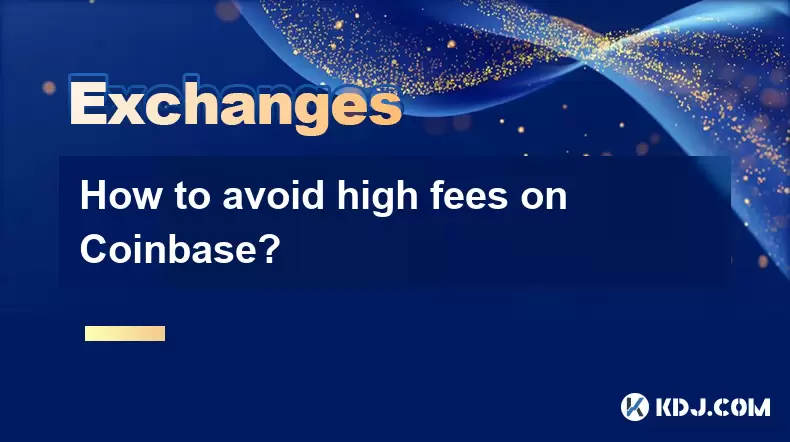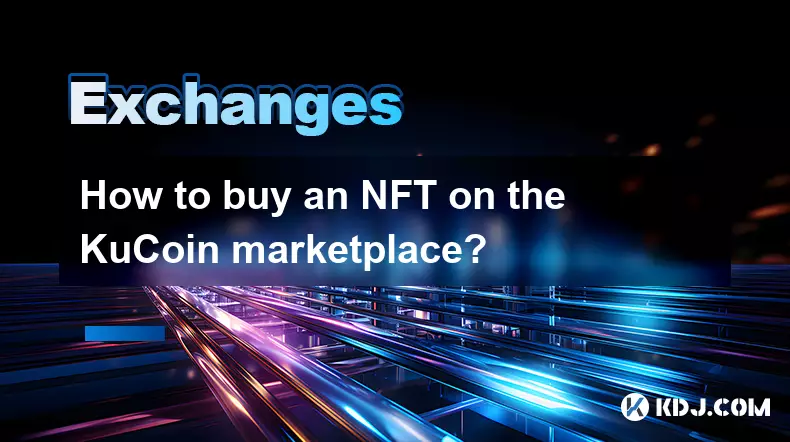-
 bitcoin
bitcoin $122025.899241 USD
-2.12% -
 ethereum
ethereum $4488.068729 USD
-4.11% -
 bnb
bnb $1315.348019 USD
8.65% -
 tether
tether $1.000457 USD
0.03% -
 xrp
xrp $2.875326 USD
-3.69% -
 solana
solana $222.043604 USD
-4.07% -
 usd-coin
usd-coin $0.999682 USD
0.00% -
 dogecoin
dogecoin $0.249887 USD
-5.62% -
 tron
tron $0.337379 USD
-2.59% -
 cardano
cardano $0.827763 USD
-5.06% -
 hyperliquid
hyperliquid $45.774531 USD
-2.43% -
 chainlink
chainlink $22.079309 USD
-5.87% -
 ethena-usde
ethena-usde $1.000156 USD
0.02% -
 sui
sui $3.482566 USD
-3.57% -
 stellar
stellar $0.386982 USD
-4.92%
How to avoid high fees on Coinbase?
To reduce fees on Coinbase, use ACH transfers, consider Coinbase Pro for lower trading costs, and time trades during low volatility with limit orders.
Jul 03, 2025 at 03:00 am

Understanding Coinbase Fee Structures
To avoid high fees on Coinbase, it's crucial to first understand the various types of fees they charge. Coinbase applies different fee models depending on your transaction type, payment method, and region. The primary fees include transaction fees, network fees, spread fees, and service charges for advanced features like staking or recurring buys.
For example, when you buy or sell cryptocurrency using a credit card or instant bank transfer, Coinbase adds a premium over the market price. This is known as the spread, and it can range from 0.5% to over 2%. Additionally, there are network fees—these are blockchain transaction fees paid to miners or validators, not Coinbase itself, but they are often grouped under the platform’s overall cost structure.
Selecting Low-Cost Payment Methods
One effective way to reduce costs is by choosing lower-fee payment methods. Using a bank transfer (ACH) instead of a credit card or debit card can significantly lower fees. While credit card transactions may incur fees up to 4%, ACH transfers typically come with minimal or no additional charges beyond the standard spread.
- Connect your bank account to Coinbase
- Select ACH transfer as your funding source
- Wait for the funds to clear before executing trades
It’s important to note that ACH transfers may take one to five business days to process, so this method is best suited for users who don’t need immediate access to funds.
Leveraging Coinbase Pro for Lower Fees
If you're an active trader, consider using Coinbase Pro, which offers a more cost-effective trading experience. Unlike the standard Coinbase app, Coinbase Pro uses a tiered maker-taker fee model, where fees can be as low as 0.1% or even less for large-volume traders.
- Transfer funds or crypto from Coinbase to Coinbase Pro
- Place limit orders instead of market orders to qualify as a maker
- Avoid taker status unless necessary, as it incurs slightly higher fees
This approach requires a bit more familiarity with trading interfaces but can lead to significant savings, especially for frequent traders.
Minimizing Spread Impact Through Timing
The price spread on Coinbase can vary based on market conditions and demand. During periods of high volatility, spreads widen, meaning you pay more than the actual market price when buying or receive less when selling.
To minimize the impact:
- Trade during times of low volatility
- Use limit orders instead of market orders
- Compare real-time prices on external platforms like CoinMarketCap or CoinGecko
By setting a limit order, you ensure that your trade executes only at your desired price or better, helping you avoid unfavorable spreads.
Managing Network Fees Efficiently
While Coinbase doesn't control blockchain network fees, it passes them directly to users. These fees fluctuate based on network congestion. For instance, during busy Ethereum network periods, gas fees can spike dramatically.
To manage these costs:
- Monitor Etherscan Gas Tracker or similar tools before sending ETH or ERC-20 tokens
- Choose Coinbase Wallet for more granular control over gas settings
- Consider transferring during off-peak hours to reduce gas fees
Although Coinbase automatically sets gas fees for most transactions, using Coinbase Wallet allows manual adjustments, giving you more flexibility in managing costs.
Using Recurring Buys Strategically
Recurring buys can help average out costs over time, especially in volatile markets. However, each individual purchase still incurs fees. To optimize:
- Set up weekly or bi-weekly buys rather than daily to reduce frequency-based fees
- Use ACH transfers as the funding source
- Enable dollar-cost averaging (DCA) to mitigate price fluctuations
This strategy helps reduce emotional decision-making and can lead to more predictable outcomes while keeping fees relatively low.
Frequently Asked Questions
Q: Does Coinbase offer any fee waivers or discounts?A: Yes, Coinbase occasionally runs promotions or referral programs that provide limited-time fee discounts. Also, users with high trading volumes on Coinbase Pro may qualify for reduced fees through their tiered system.
Q: Can I use third-party wallets to avoid Coinbase fees?A: Yes, moving your crypto from Coinbase to a non-custodial wallet like Trust Wallet or MetaMask allows you to send and receive crypto without paying Coinbase’s service fees, although you’ll still incur network fees.
Q: Are there alternatives to Coinbase with lower fees?A: Platforms like Binance, Kraken, or KuCoin often have lower fee structures, especially for active traders. Always compare fee schedules and user experiences before switching platforms.
Q: How do I check the exact fees for a transaction on Coinbase?A: Before confirming any transaction, Coinbase displays a breakdown of all applicable fees, including network fees, processing fees, and spreads. Review this summary carefully before proceeding.
Disclaimer:info@kdj.com
The information provided is not trading advice. kdj.com does not assume any responsibility for any investments made based on the information provided in this article. Cryptocurrencies are highly volatile and it is highly recommended that you invest with caution after thorough research!
If you believe that the content used on this website infringes your copyright, please contact us immediately (info@kdj.com) and we will delete it promptly.
- BlockDAG, DOGE, HYPE Sponsorship: Crypto Trends Shaping 2025
- 2025-10-01 00:25:13
- Deutsche Börse and Circle: A StableCoin Adoption Powerhouse in Europe
- 2025-10-01 00:25:13
- BlockDAG's Presale Buzz: Is It the Crypto to Watch in October 2025?
- 2025-10-01 00:30:13
- Bitcoin, Crypto, and IQ: When Genius Meets Digital Gold?
- 2025-10-01 00:30:13
- Stablecoins, American Innovation, and Wallet Tokens: The Next Frontier
- 2025-10-01 00:35:12
- NBU, Coins, and Crypto in Ukraine: A New Yorker's Take
- 2025-10-01 00:45:14
Related knowledge

How to close my position in KuCoin Futures?
Oct 01,2025 at 07:54pm
Understanding Position Closure in KuCoin FuturesTrading futures on KuCoin requires a clear understanding of how to manage open positions. Closing a po...

How to find the contract address for a token on KuCoin?
Sep 30,2025 at 09:00pm
Finding the Contract Address on KuCoin1. Log into your KuCoin account through the official website or mobile application. Navigate to the 'Markets' se...

How to set up SMS verification on my KuCoin account?
Oct 03,2025 at 12:36am
How to Enable SMS Verification on Your KuCoin AccountSecuring your cryptocurrency exchange account is essential, especially on platforms like KuCoin w...

How to update the KuCoin app to the latest version?
Oct 03,2025 at 02:18am
How to Update the KuCoin App: A Step-by-Step GuideKeeping your KuCoin app updated ensures access to the latest security features, trading tools, and u...

How to buy an NFT on the KuCoin marketplace?
Oct 02,2025 at 10:19pm
Accessing the KuCoin NFT Marketplace1. Log in to your KuCoin account through the official website or mobile application. Ensure that two-factor authen...

How to create a sub-account on KuCoin?
Oct 03,2025 at 10:18pm
Accessing the KuCoin Dashboard1. Navigate to the official KuCoin website and log in using your registered email and password. Two-factor authenticatio...

How to close my position in KuCoin Futures?
Oct 01,2025 at 07:54pm
Understanding Position Closure in KuCoin FuturesTrading futures on KuCoin requires a clear understanding of how to manage open positions. Closing a po...

How to find the contract address for a token on KuCoin?
Sep 30,2025 at 09:00pm
Finding the Contract Address on KuCoin1. Log into your KuCoin account through the official website or mobile application. Navigate to the 'Markets' se...

How to set up SMS verification on my KuCoin account?
Oct 03,2025 at 12:36am
How to Enable SMS Verification on Your KuCoin AccountSecuring your cryptocurrency exchange account is essential, especially on platforms like KuCoin w...

How to update the KuCoin app to the latest version?
Oct 03,2025 at 02:18am
How to Update the KuCoin App: A Step-by-Step GuideKeeping your KuCoin app updated ensures access to the latest security features, trading tools, and u...

How to buy an NFT on the KuCoin marketplace?
Oct 02,2025 at 10:19pm
Accessing the KuCoin NFT Marketplace1. Log in to your KuCoin account through the official website or mobile application. Ensure that two-factor authen...

How to create a sub-account on KuCoin?
Oct 03,2025 at 10:18pm
Accessing the KuCoin Dashboard1. Navigate to the official KuCoin website and log in using your registered email and password. Two-factor authenticatio...
See all articles










































































